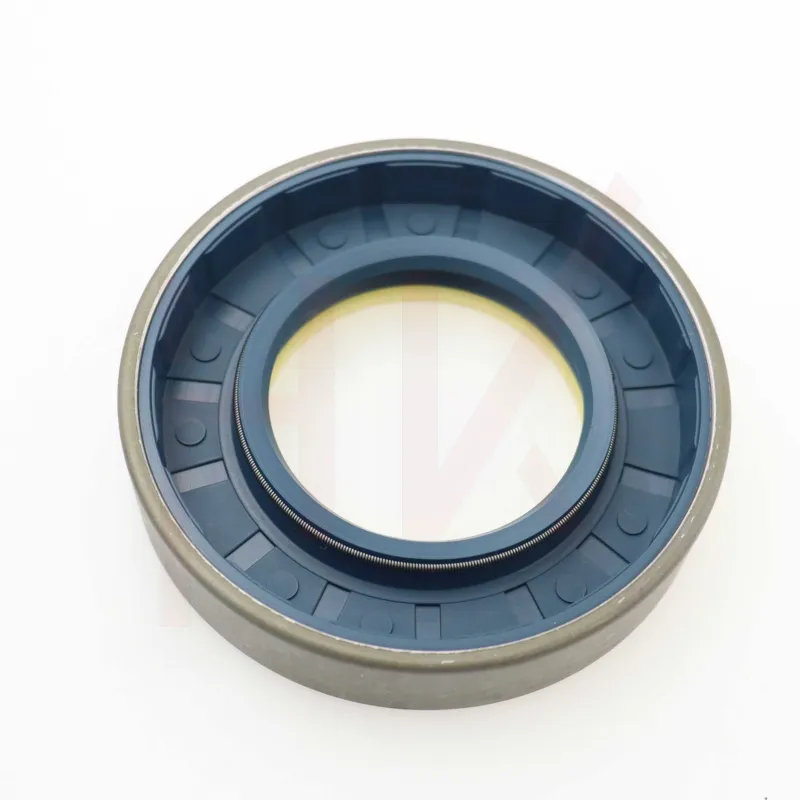Dec . 11, 2024 22:19 Back to list
wiper seal
Understanding Wiper Seals Essential Components for Optimal Performance
Wiper seals, often overlooked in the realm of engineering components, play a vital role in the functionality and longevity of machinery. Used predominantly in hydraulic applications, these seals are designed to prevent contaminants from entering hydraulic cylinders and to keep hydraulic fluids contained. This article explores the various aspects of wiper seals, including their construction, function, applications, and maintenance.
What is a Wiper Seal?
A wiper seal is a type of seal that is typically positioned at the outer edge of a hydraulic cylinder. It serves as a barrier against dust, dirt, and other particulate matter that can compromise the efficiency of hydraulic systems. Wiper seals are commonly made from elastomeric materials, such as nitrile rubber or polyurethane, which provide flexibility and excellent resistance to wear and tear. Their design is specifically tailored to fit the housing of the cylinder, ensuring a snug fit that minimizes the risk of leaks and contamination.
Function of Wiper Seals
The primary function of a wiper seal is to prevent foreign particles from entering the hydraulic system during the rod's movement. This is crucial because any contamination can lead to increased wear on the hydraulic components, potentially resulting in operational failures and costly repairs. By effectively wiping the rod as it retracts into the cylinder, the wiper seal removes any dirt or debris that may have accumulated on the surface, thereby maintaining the integrity of the hydraulic fluid and the overall operational performance.
Additionally, wiper seals help to maintain pressure within the hydraulic system. By sealing the gap between the cylinder and the rod, they prevent fluid from leaking out, which can otherwise lead to reduced efficiency and performance. The presence of a reliable wiper seal is essential for ensuring that a hydraulic system operates at peak performance, providing the necessary power and motion for various applications.
Applications of Wiper Seals
Wiper seals are employed across a wide range of industries and applications. They are commonly found in
wiper seal

1. Automotive Industry Wiper seals are integral to various automotive hydraulic systems, including brakes and power steering. They ensure the smooth operation of hydraulic pistons and prevent fluid loss.
2. Construction Equipment Heavy machinery such as excavators, bulldozers, and forklifts depend on wiper seals to protect hydraulic cylinders from dust and grime inherent in construction environments. This protection prolongs the lifespan of the equipment.
3. Manufacturing In manufacturing systems, wiper seals are used in molds, presses, and other machinery where hydraulic systems are prevalent. They ensure efficiency and reduce the risk of machine downtime caused by hydraulic failures.
4. Aerospace and Defense In aerospace applications, where precision and reliability are paramount, wiper seals are utilized in hydraulic systems controlling landing gear and other critical components.
Maintenance of Wiper Seals
Proper maintenance of wiper seals is essential for ensuring their longevity and effectiveness. Regular inspection of seals for signs of wear, such as cracks or deformation, can help identify potential issues before they escalate into costly problems. If debris is present, it should be removed gently to avoid damaging the seal. Additionally, ensuring that the hydraulic fluid is clean and at the correct levels will reduce strain on the seals.
When replacing wiper seals, it is crucial to choose seals that are compatible with the specific hydraulic system. Different applications may require seals with varying hardness, elasticity, and chemical resistance.
Conclusion
In summary, wiper seals are critical components in hydraulic systems, performing essential functions that contribute to machine efficiency and longevity. By preventing contamination and maintaining system pressure, they play a pivotal role in various industries, from automotive to aerospace. Understanding their importance and implementing proper maintenance practices can help ensure that machinery operates smoothly and effectively, leading to enhanced productivity and minimized operational costs. As technology continues to advance, the design and materials used for wiper seals will likely evolve, further improving their performance and reliability in the dynamic world of machinery.
-
TCN Oil Seal Metal Ring Reinforcement for Heavy Machinery
NewsJul.25,2025
-
Rotary Lip Seal Spring-Loaded Design for High-Speed Applications
NewsJul.25,2025
-
Hydraulic Cylinder Seals Polyurethane Material for High-Impact Jobs
NewsJul.25,2025
-
High Pressure Oil Seal Polyurethane Coating Wear Resistance
NewsJul.25,2025
-
Dust Proof Seal Double Lip Design for Construction Equipment
NewsJul.25,2025
-
Hub Seal Polyurethane Wear Resistance in Agricultural Vehicles
NewsJul.25,2025
-
The Trans-formative Journey of Wheel Hub Oil Seals
NewsJun.06,2025
Products categories
















